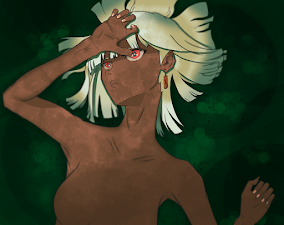Drawing to Learn and Drawing for Fun
December 1st, 2022
One of the most common pieces of advice given out to any budding artist is to just draw. After all, any practice is good practice, right? Wrong. You can draw for years and years, but if you are not doing anything constructive or changing anything each time you draw, then there is simply no room for improvement or growth.
I present to you the concept of perfect practice. I forget where I first heard the term, and I do not know if I am properly using it in the intended way. However, it conveys what I am trying to say about practice. Perfect practice is picking something to move outside of your comfort zone and continually working on that skill until it is suitable to your needs. Much like the iterative style of drawing which I touched on much earlier within my blog posts, this type of practice hones one skill through repetition.
I repeatedly practiced my hands until I could reproduce them easily. (Credit: Me)
The reason I make a distinction between drawing and practice is because at many points, drawing by nature does not mean you are growing. This applies to most things in life. You do not get better at writing by pounding your head against a wall. You do not get better at calculus by trying to brute force formulas–if they aren’t working, you need to revise your plan of attack.
Art is the same way. Drawing in an art style can be visually attractive and create a niche for artists, but at the same time, it can lock them into a continuous loop where there is no improvement simply because nothing is being changed or explored. Drawing is fun, and there are a multitude of people who are naturally drawn towards it because of its freeform expression of self. But, it takes more than creativity to get better–it takes devotion and grit.
(371 words)



Comments
Post a Comment